This article was medically reviewed by Luba Lee, FNP-BC, MS. Luba Lee, FNP-BC is a Board-Certified Family Nurse Practitioner (FNP) and educator in Tennessee with over a decade of clinical experience. Luba has certifications in Pediatric Advanced Life Support (PALS), Emergency Medicine, Advanced Cardiac Life Support (ACLS), Team Building, and Critical Care Nursing. She received her Master of Science in Nursing (MSN) from the University of Tennessee in 2006.
There are 7 references cited in this article, which can be found at the bottom of the page.
wikiHow marks an article as reader-approved once it receives enough positive feedback. In this case, 99% of readers who voted found the article helpful, earning it our reader-approved status.
This article has been viewed 256,307 times.
Studies show that you may notice water retention more easily in your hands, arms, feet, ankles, or legs, but it can occur anywhere in your body. Also called edema, water retention happens when your body stores excess fluids in your tissues.[1] Typically, your lymphatic system drains the water back into your bloodstream. Experts say factors like excess salt intake, excessive heat, hormonal fluctuations, certain medications, and some medical conditions can overwhelm your system, triggering water retention.[2] Fortunately, it's fairly easy to recognize the signs of water retention.
Steps
Evaluating Potential Weight Gain
-
1Weigh yourself. Have you suddenly gained a significant amount of weight — like more than five pounds in one day? While overeating and lack of exercise can produce weight gain over time, gaining several pounds overnight is a sure sign of water retention.
- Check your weight at various times of day, keeping a record over a period of several days. If your weight fluctuates significantly over the course of one or a few days, these fluctuations are more likely due to water retention than to actual weight gain.[3]
- Remember that for women, the hormonal changes of the menstrual cycle can significantly impact water retention. If your waist has swollen a few days before your period, it's highly likely this swelling will disappear within a day or two of starting your cycle. Reevaluate toward the end of your period.[4]
-
2Examine the physical pattern of your perceived weight gain. If you are normally a slim person, do you see less muscle definition? This is an additional sign of fluid accumulation.[5]Advertisement
-
3Consider sensible dieting if you still have questions about your weight gain. Remember that weight loss takes time; you will need to give this process several weeks. Trimming your caloric intake and upping your activity level should produce at least some weight loss; if it doesn't, water retention is a likely culprit.
Assessing Swelling in Your Extremities
-
1Examine your hands, legs, ankles, and feet for signs of swelling. The outer reaches of your blood circulation system are also the outer reaches of your lymphatic system. As a result, they are the most likely regions to suffer physical signs of water retention.
-
2Consider whether your rings are fitting more tightly than they used to. Suddenly ill-fitting rings are a sign of swollen hands. Wristwatches or bracelets may offer similar clues, though finger swelling is an especially common sign of fluid retention.
-
3Check to see whether your socks are leaving a ring around your legs. Sometimes this is caused by the fit of the sock rather than by any physiological factor, but if your normally well-fitting socks are leaving marks, your legs or ankles may be swollen.[6]
- Suddenly ill-fitting shoes present another important indication of leg and/or ankle swelling.
-
4Push down upon any swollen areas with your thumb and then release. If the indentation remains for a few seconds, you may have pitting edema, which is one type of water retention.
- Bear in mind that there is also a non-pitting form of edema that will not produce this result. You may still be retaining water even if your flesh does not "pit." [7]
-
5Look in the mirror and evaluate whether your face appears swollen. Puffiness or swelling, or skin that appears stretched or shiny, can be an additional sign of water retention. Under-eye puffiness is especially common.[8]
-
6Consider whether your joints feel achy. Focus upon areas where you are experiencing swelling and/or pitting. Stiff or aching joints, especially in your extremities, are an additional sign of fluid retention.[9]
Determining Probable Cause
-
1Assess your surrounding environment. If it is a very hot day, your water retention may be caused by the heat. This can be especially true if you have been active in hot weather and your fluid intake has been low. While it may seem like a paradox, drinking more water will actually help you flush out excess fluids. High altitude may also cause you to retain water.[10]
-
2Evaluate your recent activity level. Standing or sitting in the same position for too long may have caused fluid to pool in your lower limbs.[11] Long airplane flights or sedentary work can cause your body to retain water. Get up and move around at least once every two hours, or perform exercises such as flexing your toes back and then stretching them forward if you find yourself stuck on a long flight.[12]
-
3Assess your diet. Excess sodium intake often leads to fluid retention. Obesity can also stress the lymphatic system and produce water retention, especially in your body's extremities.[13] Take a close look at food labels to ensure sodium isn't "hiding" in foods you haven't suspected of being salty.
-
4Review your most recent menstrual cycle. Are you reaching the mid-point or end-point of your monthly cycle? If you are a woman, this may be the most common reason for retaining water.
-
5Rule out serious medical conditions. While your water retention is likely caused by one of the factors listed above, it can also be a sign of more serious medical problems, including poor heart or kidney function, such as congestive heart failure and renal failure.
- If you are pregnant and experience a sudden change in water retention, contact your doctor immediately. Water retention can be a symptom of preeclampsia, a condition that involves serious maternal health risks.[14]
Warnings
- If you are pregnant, always consult with your doctor about any perceived changes in water retention.⧼thumbs_response⧽
- If you are retaining water and feel tired or have trouble urinating, call your doctor right away — you may be experiencing trouble with your heart or kidney function.⧼thumbs_response⧽
- Even if you don't experience the warning symptoms listed above, call your doctor if water retention symptoms persist. You'll want to rule out the possibility of any other medical problems, including liver problems or problems with your lymphatic system.⧼thumbs_response⧽
References
- ↑ https://www.mayoclinic.org/diseases-conditions/edema/symptoms-causes/syc-20366493
- ↑ https://www.betterhealth.vic.gov.au/health/conditionsandtreatments/Fluid-retention-oedema
- ↑ https://www.betterhealth.vic.gov.au/health/conditionsandtreatments/Fluid-retention-oedema
- ↑ http://www.medicalnewstoday.com/articles/187978.php
- ↑ http://www.selfgrowth.com/articles/the-5-signs-you-are-holding-water-and-3-fast-solutions-anyone-can-follow
- ↑ http://www.selfgrowth.com/articles/the-5-signs-you-are-holding-water-and-3-fast-solutions-anyone-can-follow
- ↑ https://www.betterhealth.vic.gov.au/health/conditionsandtreatments/Fluid-retention-oedema
- ↑ http://www.mayoclinic.org/diseases-conditions/bags-under-eyes/basics/causes/con-20034185
- ↑ https://www.betterhealth.vic.gov.au/health/conditionsandtreatments/Fluid-retention-oedema
- ↑ https://www.betterhealth.vic.gov.au/health/conditionsandtreatments/Fluid-retention-oedema
- ↑ http://www.medicalnewstoday.com/articles/187978.php
- ↑ http://www.npr.org/templates/story/story.php?storyId=12593776
- ↑ http://www.medicalnewstoday.com/articles/187978.php
- ↑ http://americanpregnancy.org/pregnancy-complications/preeclampsia/
About This Article
If you have water retention, you’ll probably notice some swelling in your hands, legs, ankles, and feet. Rings or bracelets that previously fit may now fit more tightly than they used to. Additionally, you may have water retention if you have stiff or aching joints in your swollen areas. One way to test for water retention is to push down on swollen areas with your thumb and then release. If an indentation remains for more than a few seconds, you may have pitting edema, which is one type of water retention that can be caused by an issue with your thyroid or lymphatic system. For more advice from our Medical co-author, including how to determine the cause of your water retention, keep reading!
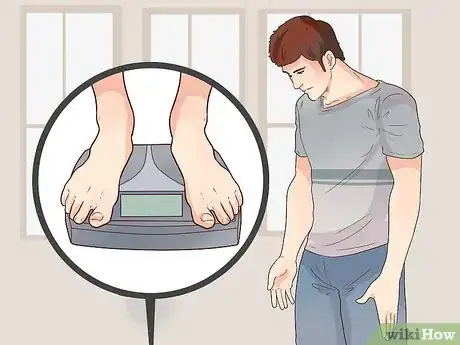


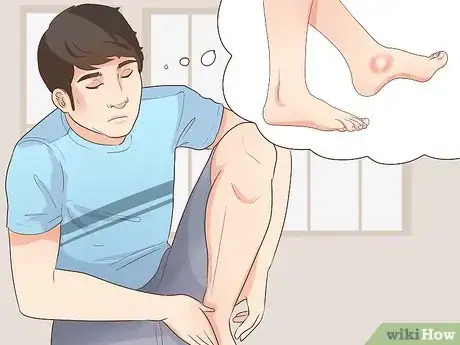
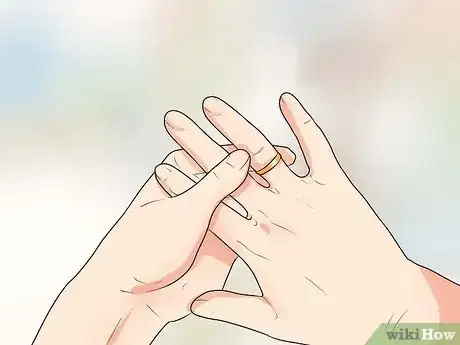

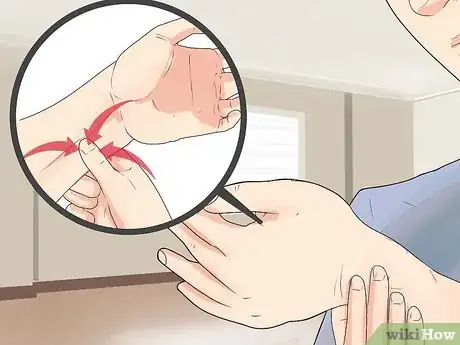

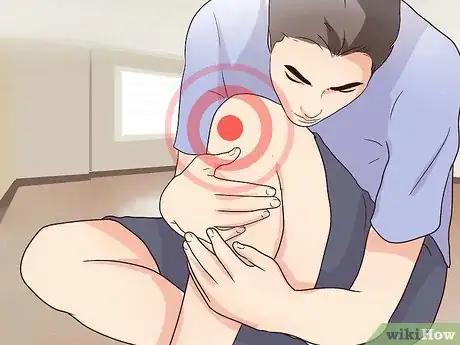
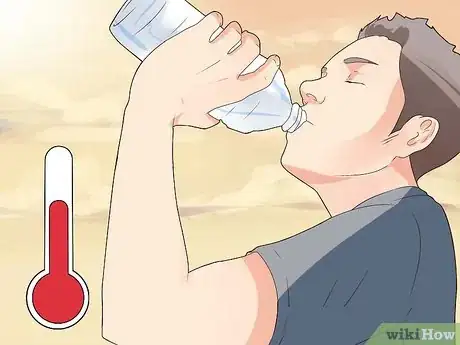


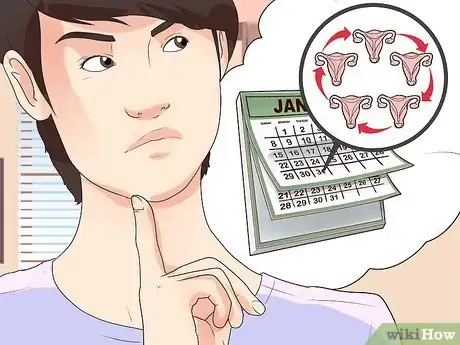

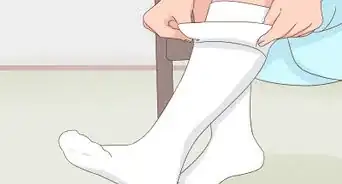



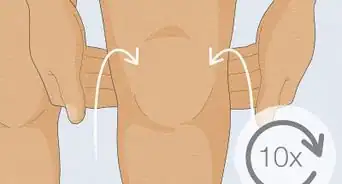






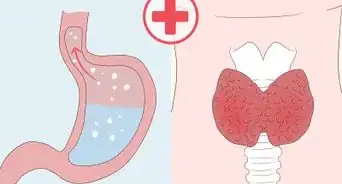













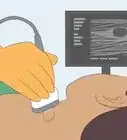





































Medical Disclaimer
The content of this article is not intended to be a substitute for professional medical advice, examination, diagnosis, or treatment. You should always contact your doctor or other qualified healthcare professional before starting, changing, or stopping any kind of health treatment.
Read More...